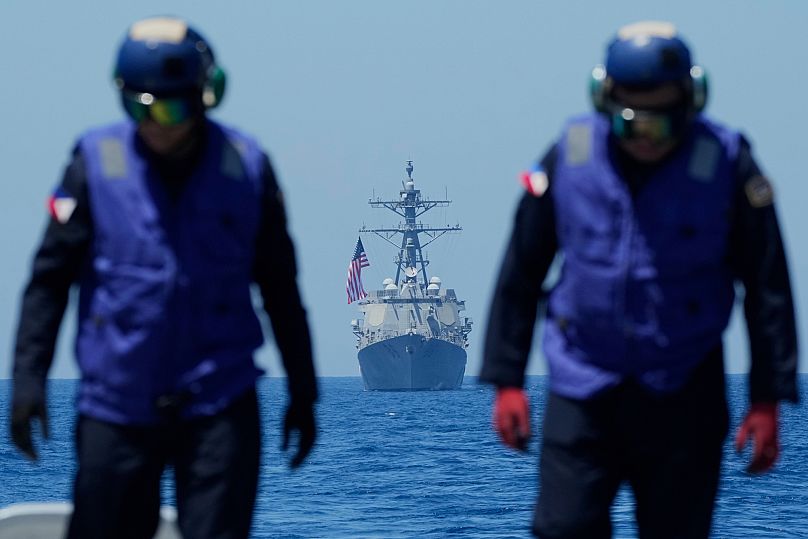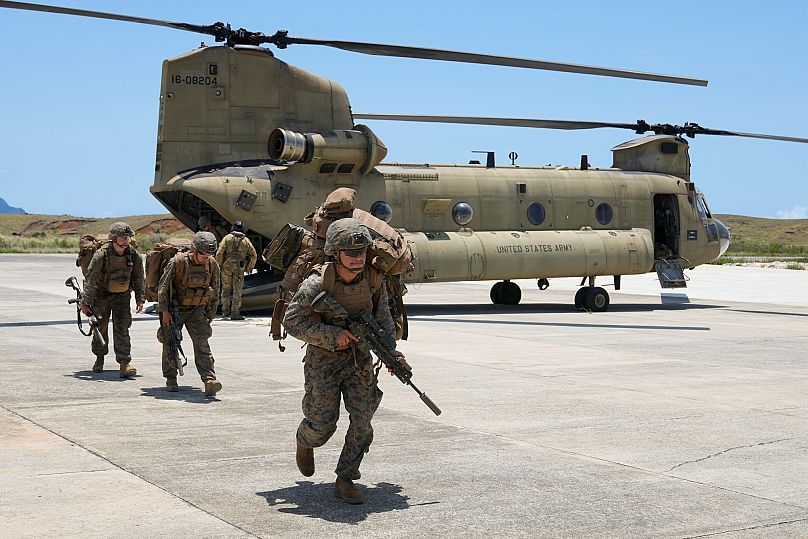
Thousands of American and Filipino troops have launched joint military exercises simulating the defence of the Asian archipelago, including a mock island invasion, in a large-scale drill that has drawn sharp criticism from China.
The annual Balikatan (Tagalog for "shoulder to shoulder") exercises, which will run until 9 May, involve around 9,000 US and 5,000 Filipino military personnel.
Australian forces have also joined and Japan and other nations have sent observers.
US and Philippine military leaders described this year's drill as a "full-scale battle scenario," featuring warships, fighter jets and high-powered weaponry, including a US Marine anti-ship missile system.
"Our combined strength…possesses a degree of lethality for a force that possesses an indomitable warrior ethos and spirit," said US Marine Corps Lieutenant General James Glynn at the opening ceremony in Manila.

"It's all dedicated to one purpose: to ensure the defence of the Philippines and to maintain a free and open Indo-Pacific."
Although not explicitly naming China, the drills come amid growing friction over Beijing's territorial claims in the South China Sea, which overlap with Philippine waters.
China has long opposed foreign military exercises in the region, especially those involving the United States.
"We are ready," Glynn added when asked about potential threats in the Taiwan Strait and the South China Sea. "All of us want to resolve any regional conflict peacefully, but should deterrence fail, we need to be prepared."
Philippine army Major General Francisco Lorenzo said the exercises are not targeted at any nation, but instead aim to boost national defence and enhance cooperation between the allies.
"It will increase our capabilities and our preparedness and responsiveness to any eventuality," he said.
The drills will include a simulated counterattack against an enemy force occupying an island, the sinking of a mock enemy vessel using artillery and missile fire, joint patrols in or near disputed waters, and aerial reconnaissance missions.
The US Navy is also deploying its Navy Marine Expeditionary Ship Interdiction System, an anti-ship missile platform, along with unmanned sea vessels. These will be tested in exercises aimed at protecting Philippine sovereignty, officials said.
In addition, special forces from both nations will conduct training in the Batanes Islands, located at the northernmost tip of the Philippine archipelago and just across the Luzon Strait from Taiwan.
A Philippine military official confirmed that the US Army's mid-range missile system, equipped with SM-6 and Tomahawk missiles, had been repositioned to a strategic western coastal province facing the South China Sea.

The weapon had previously been stationed in Laoag, in the north of the country. China has criticised the move, warning it could fuel an arms race.
China's foreign ministry has consistently condemned the Balikatan exercises as destabilising, accusing the US of fuelling tensions and attempting to contain Beijing through its alliances.
Nevertheless, US Defence Secretary Pete Hegseth, during a recent visit to Manila, reiterated Washington's commitment to its oldest ally. He insisted that the US was not preparing for war, but emphasised that peace would be achieved "through strength."
Washington has repeatedly affirmed its obligation under the 1951 Mutual Defence Treaty to defend the Philippines if its forces or vessels are attacked, including in the South China Sea. Other claimants to the busy waterway include Vietnam, Malaysia, Brunei and Taiwan.







